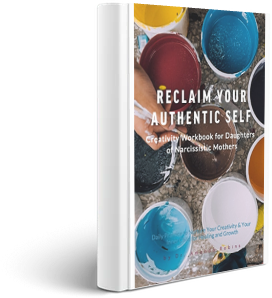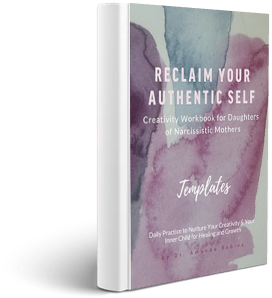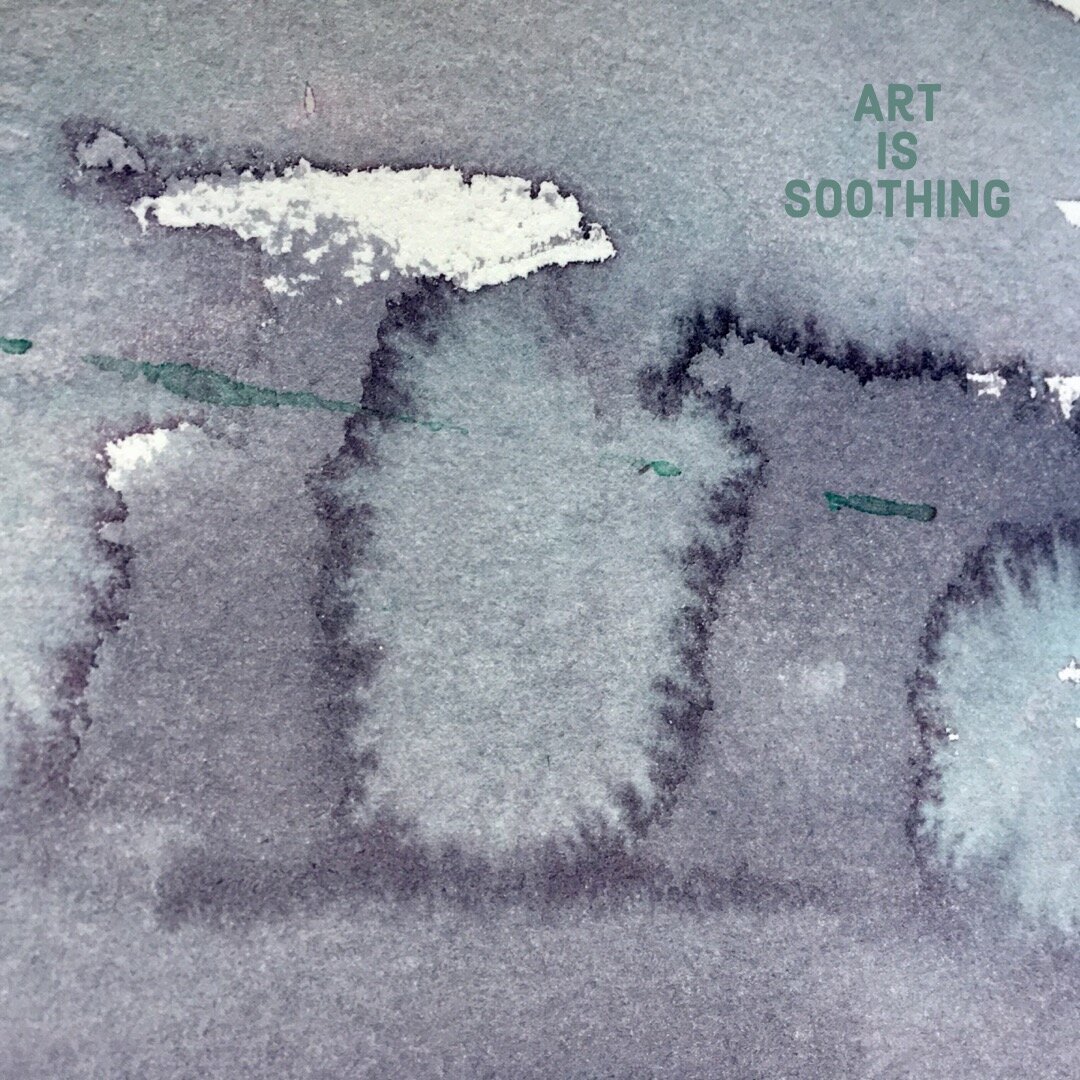Healing and Recovery for Daughters of Narcissistic Mothers
Relearning How to Create Spontaneously
As children, we are all naturally creative and joyful. But most of us had our spontaneous creativity trained out of us at an early age when we felt pressured to please others by striving for a "talented" end-product.
Children of narcissists are often raised to believe they are only acceptable when pleasing their parents.
Your natural affinity for art may have been exploited to impress others and allow your parents to brag about your talent. Or perhaps you gave up art because it just wasn’t valued by your achievement-oriented parents. You may have lost faith in your own abilities when your drawings were rejected, criticised and judged for not being what your parents or teachers wanted or expected (just like you were).
These exercises can help you recollect and reflect upon your authentic creative expression and how you may have stymied your talent in order to fit in.
INNER CHILD WORK
Healing from Within – Nurturing Your Inner Child
For most daughters of narcissistic mothers, the wounds will be very deep.
They are often deep enough to affect your connection to your authentic self. Getting in touch with, and nurturing your inner child will help you heal some of these deep wounds. Acceptance, love and nurturing can provide the ongoing and non-judgemental support you never received from your narcissistic parent. Be compassionate towards yourself if your authentic self-expression feels awkward and childlike at first.
INNER CHILD DRAWING
Inner child drawings are a creative way to regain contact with aspects of your psyche that you might otherwise ignore or repress. Inner child drawings are typically done with your non-dominant hand so that you are not tempted to try and control them with your authoritarian left brain. Buy yourself a box of kid's crayons or pencils to support your inner child's creative process.
Set aside some quiet alone time to do these exercises.
I want you to reach deep inside yourself and check your heart.
Think about yourself as a small child.
What does that little girl want? How does she feel?
How does your inner child feel today?
What does she need?
What does she want to say?
Where is she?
How does her body feel?
Is she big or small, quiet or loud?
Angry or sad? Thoughtful or full of rage? Frustrated or calm? What colour is her anger? What colour is her sadness? What colour is her longing?
This reconnection allows you to access the fragmented parts of yourself and helps your natural self-compassion to rise.
Try this process for 30 days.
Daily Inner Child Drawing Exercise
1. Relax and breathe with your paper and crayons in front of you.
2. Close your eyes; see or feel a child near you. Notice the colour of her hair, notice her height, posture, clothing and demeanour.
Open your heart and feel yourself accepting this child exactly as she is, even if she is not what you expected. If she is angry, sad or frightened, withhold judgement and welcome her and her authentic feelings.
Draw a picture of your inner child with your non-dominant hand.
3. Ask the child to play a game with you. The adult in you will ask the child these questions: What is your name? How old are you? What are you feeling right now? What can I do to help you feel good? Write the questions on the top or bottom of your drawing in your dominant hand.
4. Let the child draw a picture of herself for you and answer the questions using fun kid art materials such as crayons or felt markers. Draw and answer the questions with your non-dominant hand.
5. Thank the child for sharing with you.
Be aware that as you draw for 30 days in a row, many different inner children may want to come up for your witnessing attention. Some inner children will be happy, some will be sad, some angry. Some may have have been buried deep inside you, or perhaps they are just barely alive for lack of attention. Allow them to be present without judging or trying to control them or their feelings.
Be prepared for fear and buried feelings to come up during this process. Also expect a great sense of inner excitement and enjoyment. The younger, exiled parts of your personality long to speak, and will gladly share their truth through your non-dominant hand.
Guidelines for the Optimum Self-Expression of Your Inner Child
Treat your inner child as you would a real child. Be kind, gentle, nurturing and interested. In essence, your dominant hand parents and nurtures the "younger voices" of your non-dominant hand.
(Inspired by Michele Cassou, author of Kid's Play - adapted to inner child art.)
1. Always approach creativity as a process-oriented activity. Do not expect your inner child to draw perfectly.
2. Never ask your inner child/children to paint or draw realistically.
3. Never tell your inner child/children what to draw or paint or give them something to copy.
4. Never correct your inner children's drawings or ask them to “fix” them.
5. Never criticise or praise your inner child/children's drawings. Simply observe them with acceptance and love.
6. Never ask your inner child/children to tell you what their drawings represent, or why they painted or drew them. Create a safe environment for the unfettered and intuitive expression of feelings through imagery.
7. Show care, respect and interest for everything your inner child/children creates.
8. Observe your inner child/children's process with understanding. They must feel seen.
9. Never compare your different inner child/children's work. Never encourage competition.
10. When your inner child/children ask(s) for help to draw or paint, don't show them "how to". Encourage them to realise they can create anything they want.
11. Appreciate your inner child/children for who they are and how they feel, not what they do.























